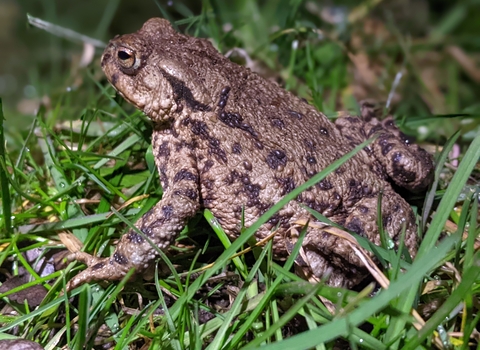Across the county amphibians are on the move, starting to make the often risky journey from their hibernation quarters back to breeding ponds. Being very particular about where they breed, they invariably migrate back to their ancestral breeding ponds each year, taking the same route, regardless of what lies in their way.
On warm wet evenings from now until early April, toads will be crossing roads, with many of the crossing points being on busy stretches. Some of these will be patrolled by dedicated volunteers wearing high vis jackets and carrying buckets - Rebecca Neal, the Trust's communities officer in Cambs runs a patrol between Bourn and Cambourne, along with a team of dedicated local people. Rebecca explains: “Patrols are carried out when weather conditions are favourable. Animals tend to move when it is wet, dark and above 5ºC; we go out for up to two hours, at some point between 6-9pm. On a toad patrol, volunteers walk up and down a 400m stretch of road in pairs, wearing head-torches to look for frogs, toads and newts on the the road and verges. Wearing gloves we collect any that we find, put them in a bucket then release them on the other side of the road at a safe spot, as close to their breeding location as possible. We record and move any dead animals we find.”
Great pest controllers, they eat slugs, snails, beetles and flies in gardens and crop fields, sometimes referred to as an “ecosystem service” - a free benefit to humans from nature. However, toads are really under threat and need our help; research by Froglife from 2016 suggested that common toads had declined by 68% in the UK in the last 30 years despite being classified as “Least concern” on the International Union for Conservation of Nature’s red list of threatened species.
See link below to volunteer, Froglife also run patrols

